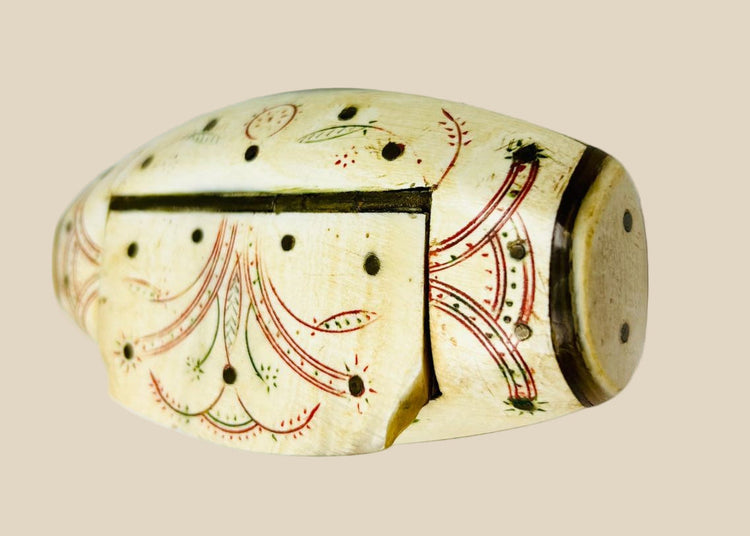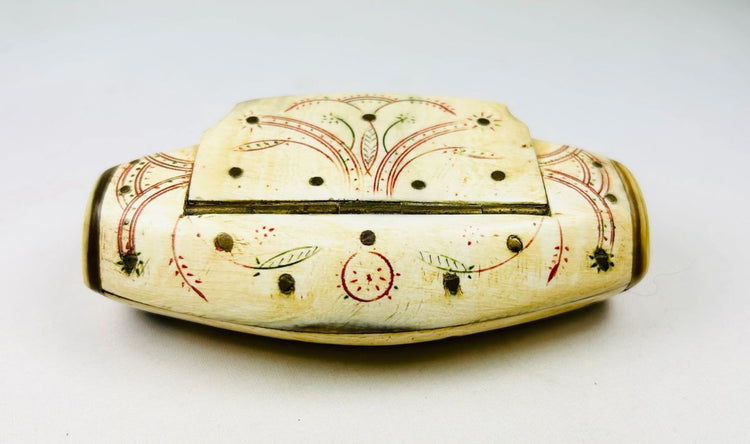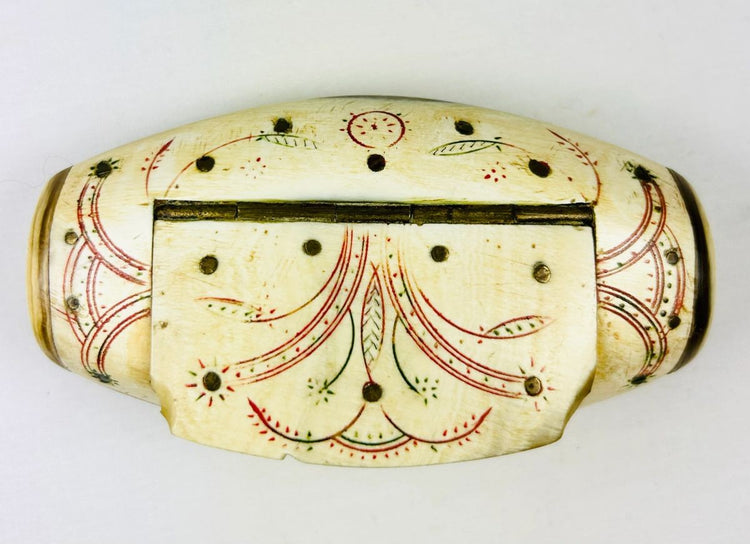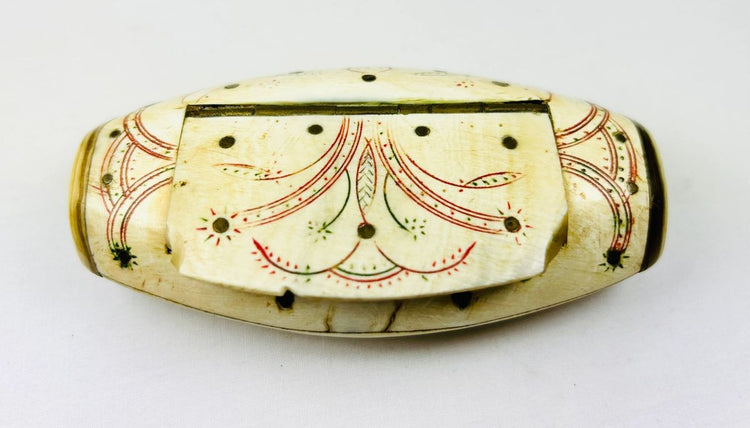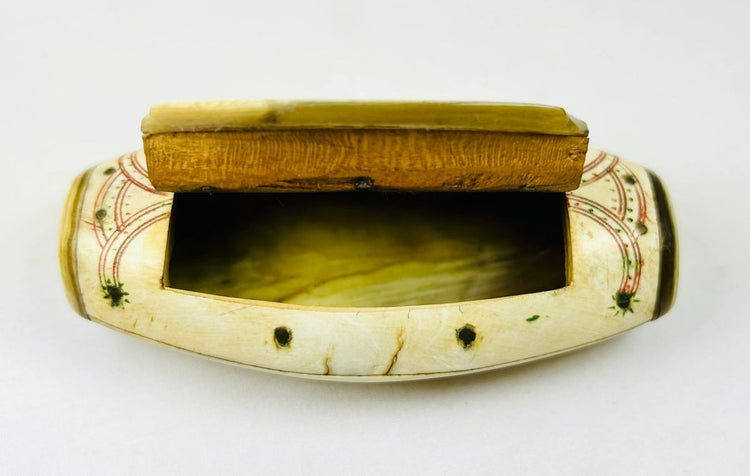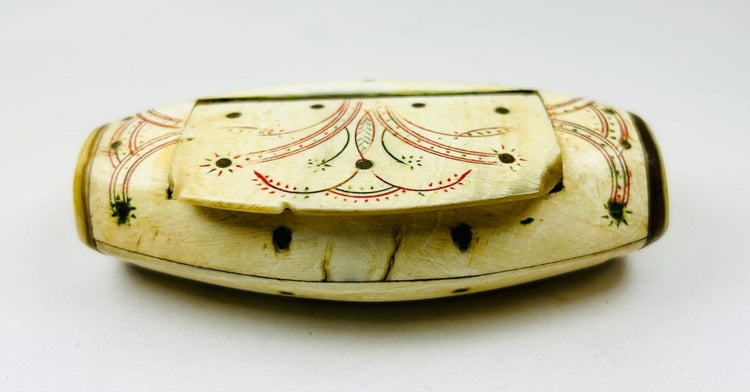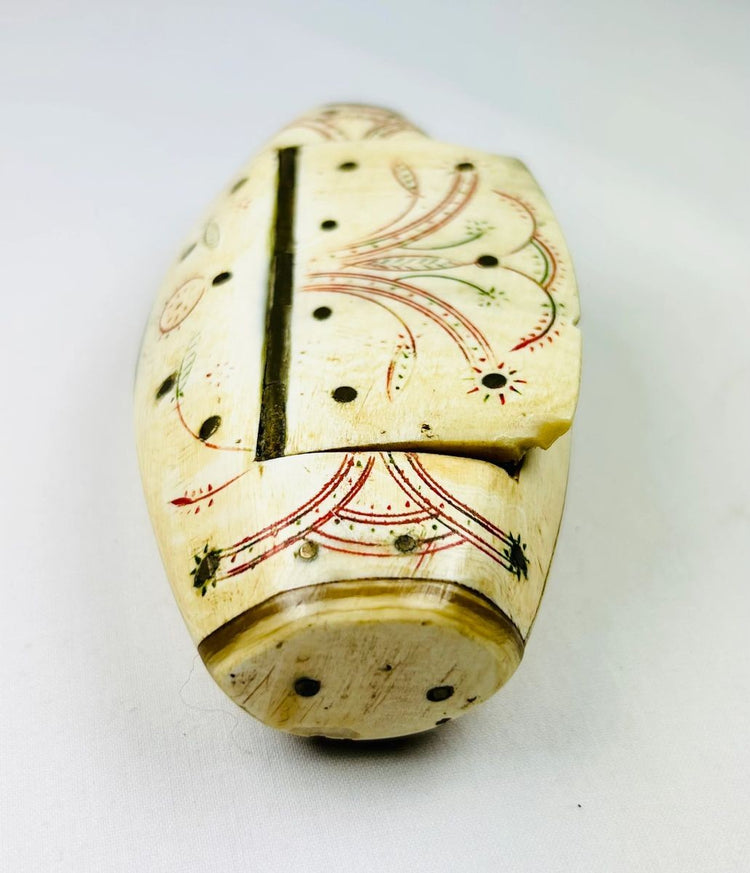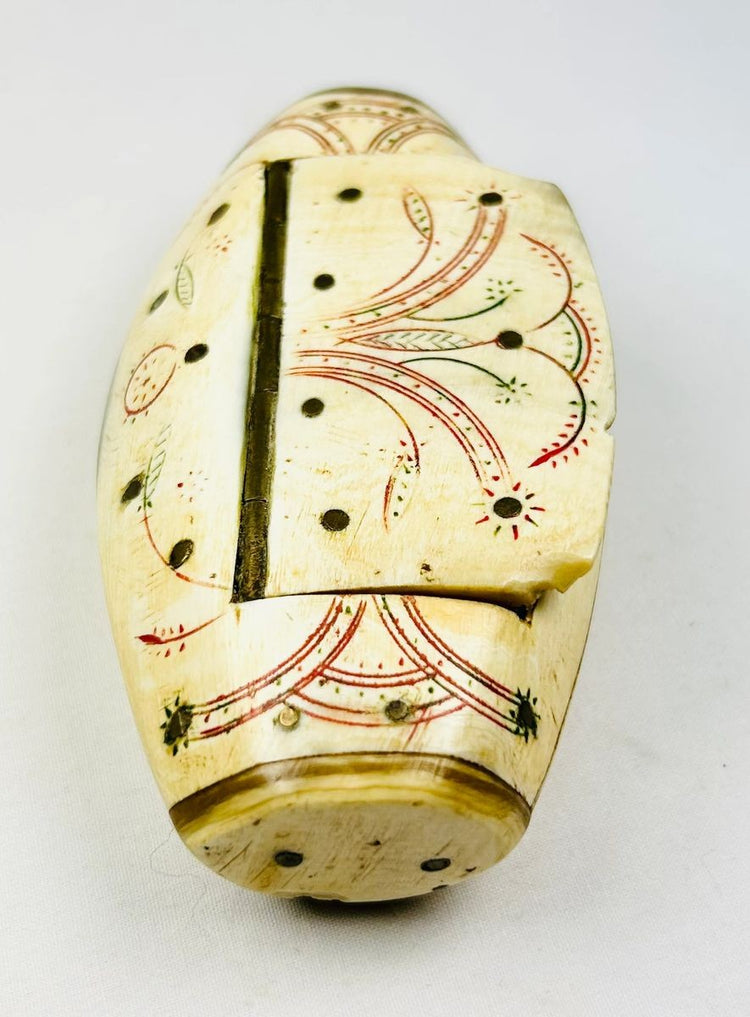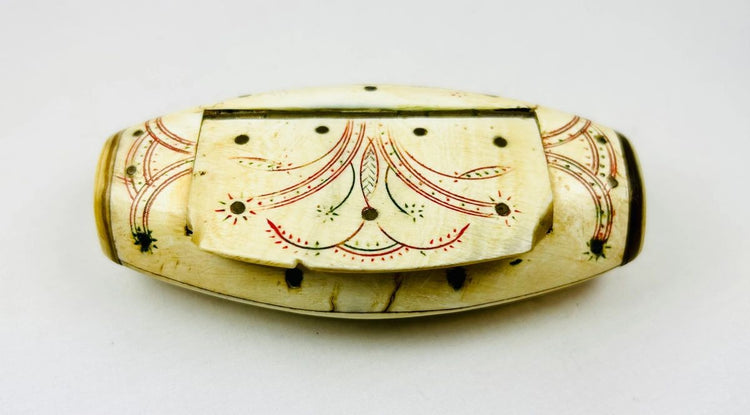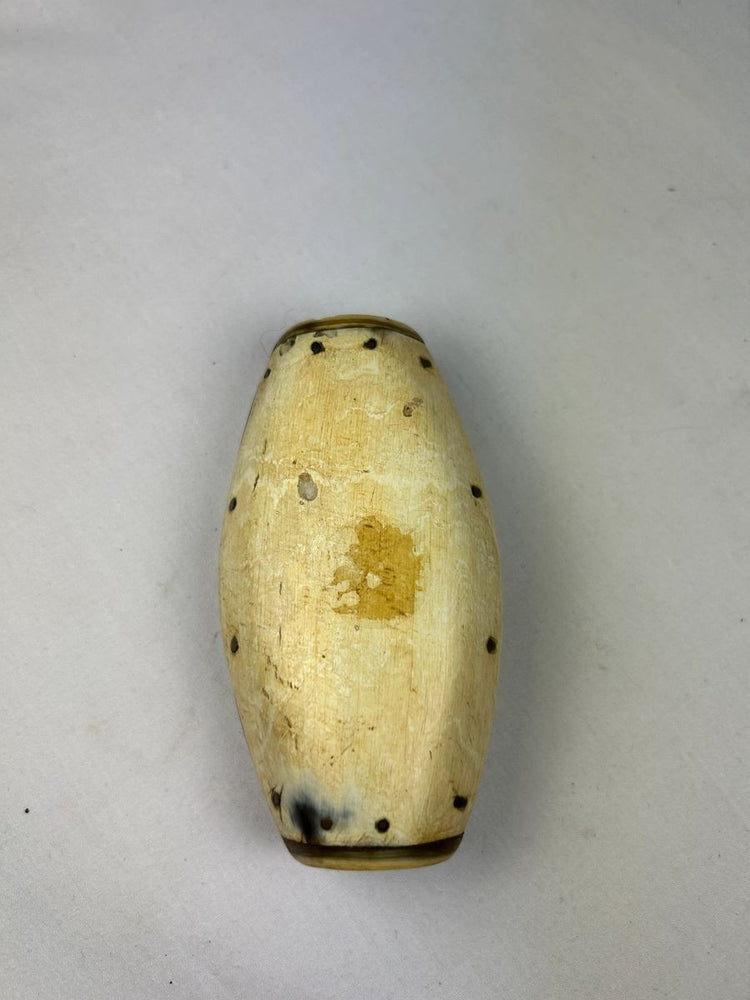Napoleonic Era Prisoner-of-War Snuff Box |with Polychrome Engraving | Circa 1800
Description
More
Less
Historical Context & Origin
Region: United Kingdom (crafted by French POWs)
Material: Carved and inked bone with metal pins
Period: Napoleonic Wars (circa 1793–1815)
Description
This rare and beautifully preserved snuff box is a fine example of the intricate folk art created by French prisoners of war held in Britain during the Napoleonic era. Constructed from hand-carved bone—likely ox or whale—and assembled with small metal pins, the box displays a domed form with a hinged lid. Its surface is decorated with delicately incised floral and foliate motifs, highlighted in red and green inks applied with great precision. Such pieces were often exchanged for food, tobacco, or sold to local civilians, reflecting both resilience and artistry during a period of confinement and hardship.
Features
- Finely hand-carved bone body with domed form
- Hinged lid with internal compartment for snuff or small valuables
- Original hand-colored ink decoration in red and green
- Metal rivets securing the bone panels
- Period patina and natural fissures typical of antique bone
Cultural Significance
Prisoner-of-war craftwork such as this represents not only the skill and ingenuity of captured French soldiers but also the cultural exchanges between prisoners and local communities. These objects are highly collectible today, offering insight into wartime resilience, creativity, and folk traditions of the early 19th century.
Condition
Very good antique condition with age-appropriate wear. Minor fissures and one small chip to the lid edge. Hinge remains intact and functional. Coloring still visible and vibrant.
Dimensions (approximate)
Length: 4 in
Height: 2 in
Age
Approx. 210–225 years old (Napoleonic period)
Description
Historical Context & Origin
Region: United Kingdom (crafted by French POWs)
Material: Carved and inked bone with metal pins
Period: Napoleonic Wars (circa 1793–1815)
Description
This rare and beautifully preserved snuff box is a fine example of the intricate folk art created by French prisoners of war held in Britain during the Napoleonic era. Constructed from hand-carved bone—likely ox or whale—and assembled with small metal pins, the box displays a domed form with a hinged lid. Its surface is decorated with delicately incised floral and foliate motifs, highlighted in red and green inks applied with great precision. Such pieces were often exchanged for food, tobacco, or sold to local civilians, reflecting both resilience and artistry during a period of confinement and hardship.
Features
- Finely hand-carved bone body with domed form
- Hinged lid with internal compartment for snuff or small valuables
- Original hand-colored ink decoration in red and green
- Metal rivets securing the bone panels
- Period patina and natural fissures typical of antique bone
Cultural Significance
Prisoner-of-war craftwork such as this represents not only the skill and ingenuity of captured French soldiers but also the cultural exchanges between prisoners and local communities. These objects are highly collectible today, offering insight into wartime resilience, creativity, and folk traditions of the early 19th century.
Condition
Very good antique condition with age-appropriate wear. Minor fissures and one small chip to the lid edge. Hinge remains intact and functional. Coloring still visible and vibrant.
Dimensions (approximate)
Length: 4 in
Height: 2 in
Age
Approx. 210–225 years old (Napoleonic period)
You May Also Like


























